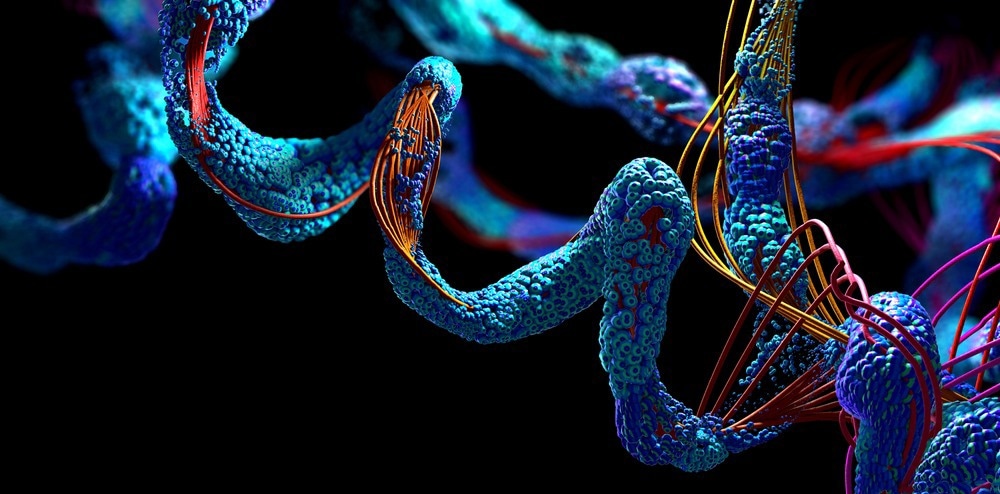EPFL researchers have created a unique imaging approach for capturing fast protein dynamics. They were able to study the behavior of a virus in unprecedented detail, thanks to the technology, which is a microsecond, time-resolved variant of cryogenic electron microscopy.

Image Credit: Christoph Burgstedt/Shutterstock.com
Proteins are the workhorses of biological systems, performing tasks with incredible accuracy and speed. For years, viewing proteins in motion has been difficult because imaging technologies sometimes lacked the speed and resolution needed to catch their graceful but fast dances.
Using a unique imaging approach that pushes the time-resolution of cryo-electron microscopy (cryo-EM) down to microseconds, a team of scientists led by Professor Ulrich Lorenz at EPFL has observed the rapid dynamics of a virus in real time. The findings were reported in Nature Communications.
The imaging approach was initially created by researchers in 2021, and it is based on cryoEM, a technique that can record images of biomolecules such as proteins with atomic precision. In cryoEM, samples are embedded in vitreous ice, a glass-like type of ice formed when water freezes so quickly that crystallization is impossible.
After the sample has been vitrified, high-resolution images of its molecular structure can be captured using an electron microscope, which creates images using an electron beam rather than light.
In 2017, the groundbreaking cryoEM method's creators, Jacques Dubochet, Joachim Frank, and Richard Henderson, were awarded the Nobel Prize in Chemistry. In 2021, Lorenz and his colleagues expanded the possibilities of cryoEM by quickly melting the vitrified sample with a laser beam to record images of protein motions at the microsecond (millionth of a second) timeframe.
As the ice melts into a liquid, it creates a “tunable” time frame in which the proteins can be induced to migrate in the same manner they do in the cell's natural liquid state.
Using the same method, the researchers have now captured fast viral movements with unprecedented accuracy. The researchers concentrated on the cowpea chlorotic mottle virus (CCMV); a plant virus recognized for its large-amplitude movements that are essential to the infection cycle.
It is well known that a change in pH causes the virus’s capsid (a protective shell) to quickly grow, and the team was able to see the exact mechanics of this process using the novel approach.
It is an expansion of the capsid that occurs when the virus infects a cell. We studied this process in reverse, i.e., the contraction of the capsid, which allowed us to elucidate the mechanics of the capsid in a more straightforward manner.”
Ulrich Lorenz, Assistant Professor, EPFL
The novel imaging approach performed admirably.
Lorenz added, “We got a very detailed picture of the functioning and mechanics of this nanoscale machine, which includes the surprising insight that different motions of the capsid proteins occur at different speeds. We also learned that the contraction, even though it is a large-amplitude motion, is very rapid, with the virus in its extended state resembling a stretched spring that is suddenly released and contracts.”
Beyond viruses, the new microsecond time-resolved cryo-EM approach addresses the wider problem of monitoring proteins in action.
“We show, for the first time, that our method can be used to observe a process that actually occurs in nature. No other method exists that would be able to make this type of observation. If it becomes possible to extend our experiments to a broad range of systems, which we firmly believe is the case, our method has the potential to revolutionize our understanding of how proteins function,” Lorenz concluded.
Source:
Journal reference:
Harder, O. F., et al. (2023). Fast viral dynamics revealed by microsecond time-resolved cryo-EM Nature Communications. doi.org/10.1038/s41467-023-41444-x